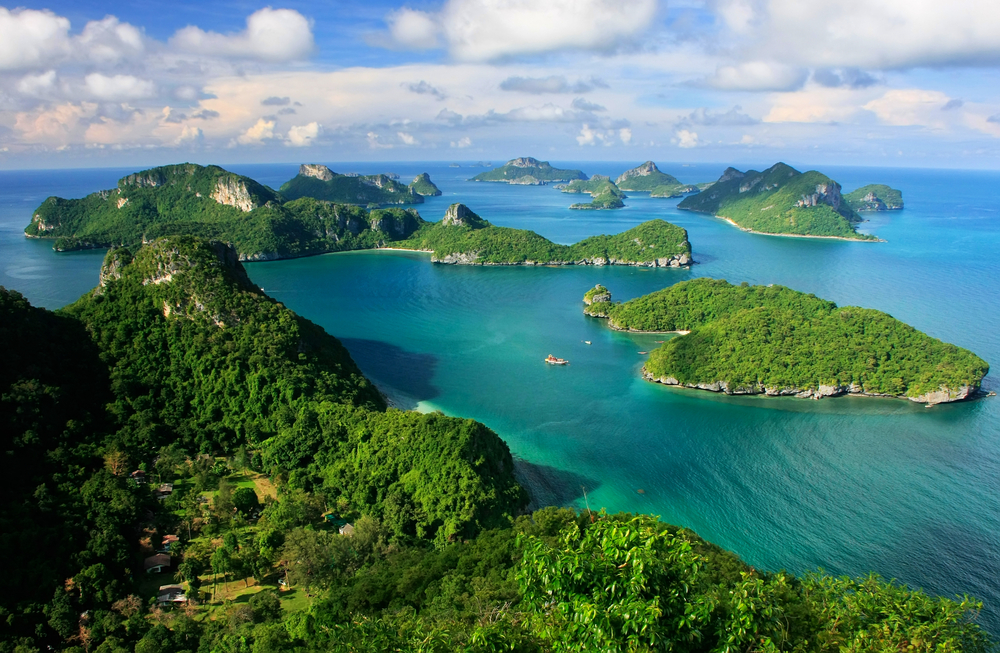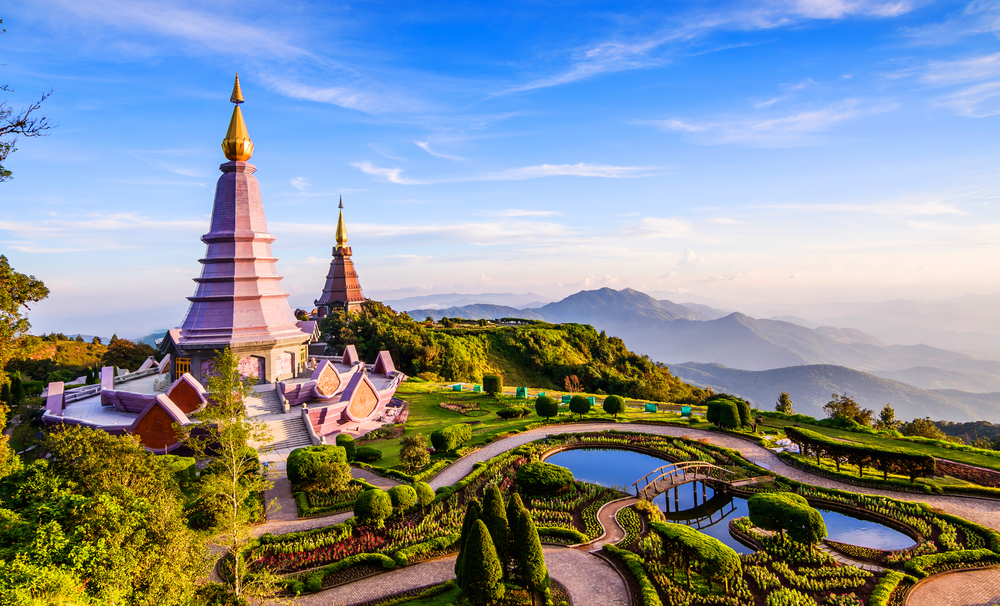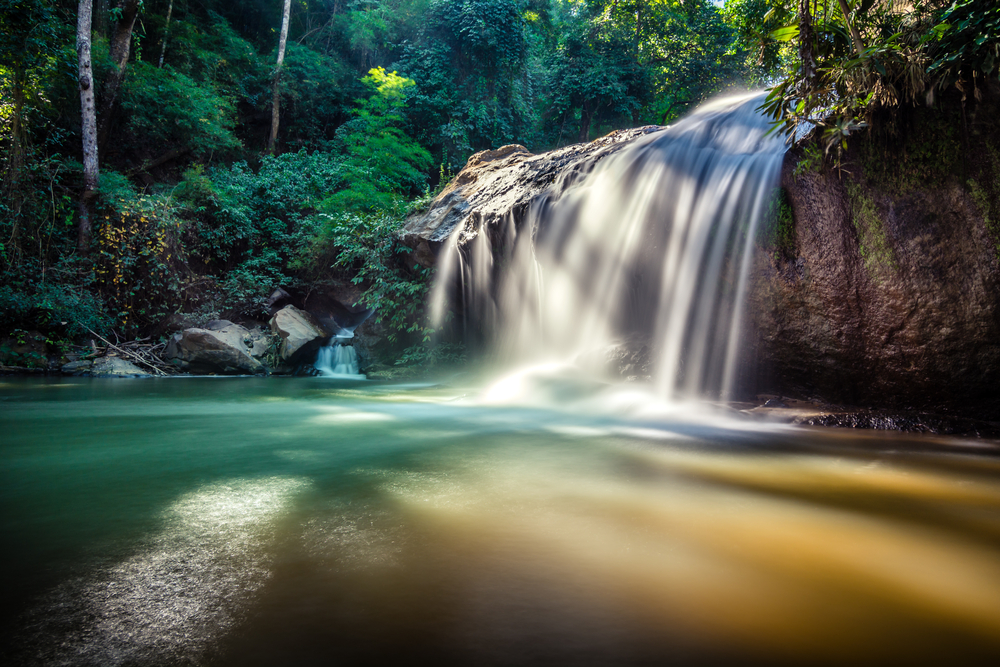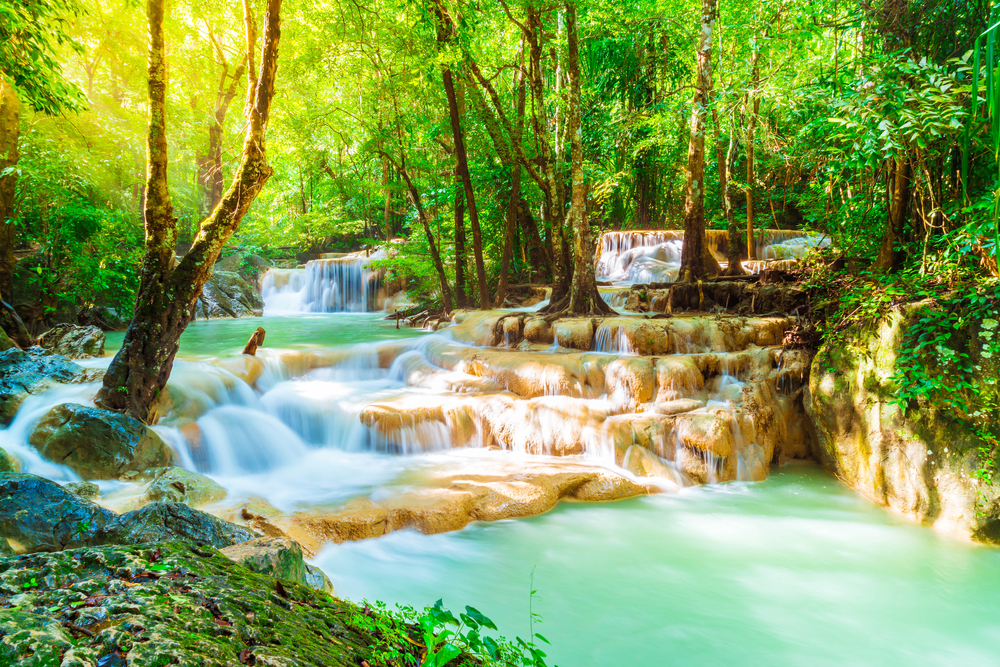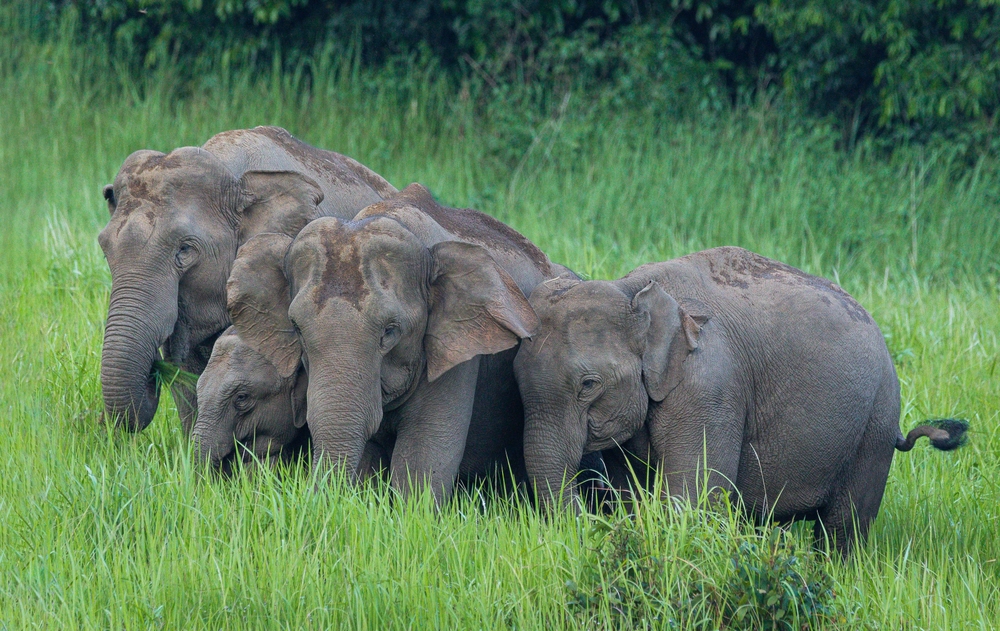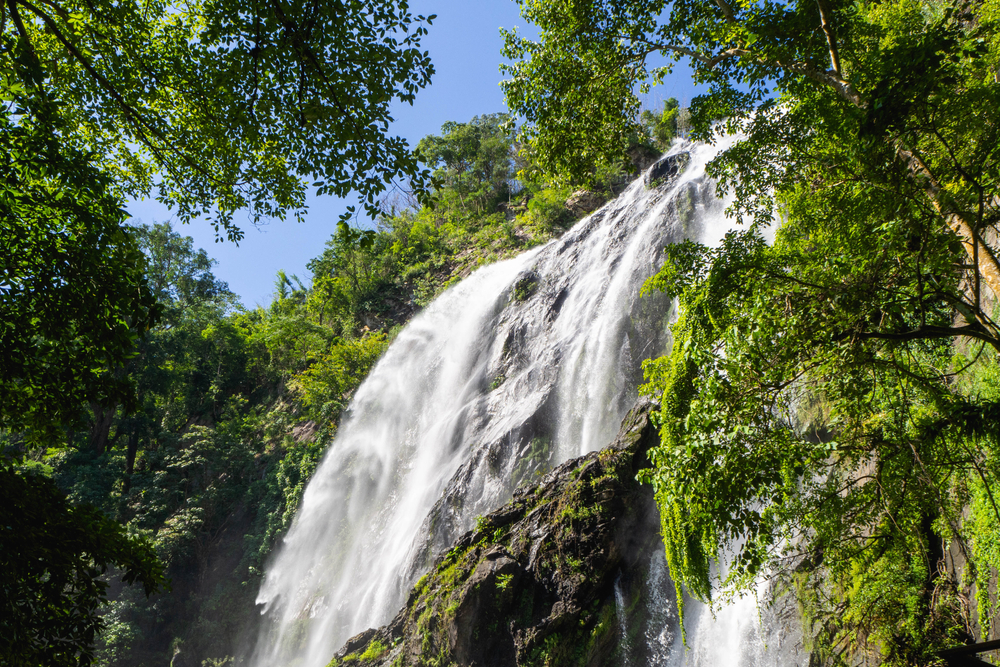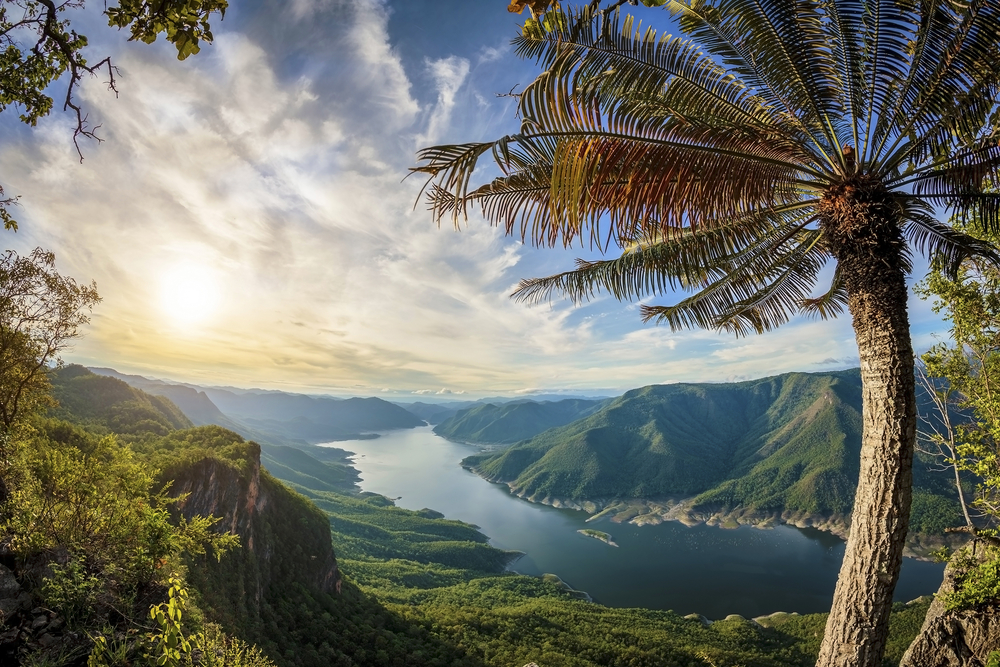Mu Ko Ang Thong Overview
Mu Ko Ang Thong National Park, or อุทยานแห่งชาติหมู่เกาะอ่างทอง in Thai, is a stunning marine national park located in the Gulf of Thailand, in Surat Thani Province. This archipelago spans approximately 102 square kilometers (39 square miles), with 42 emerald islands scattered across azure waters.
Of this, 82% is marine territory, making it a haven for aquatic exploration and biodiversity. The park is an iconic attraction in southern Thailand, renowned for its dramatic karst limestone formations, pristine beaches, and vibrant coral reefs.
The landscape of Mu Ko Ang Thong is nothing short of enchanting. Towering limestone mountains rise abruptly from the sea, cloaked in lush greenery and interspersed with hidden lagoons, caves, and striking cliffs. The islands feature dense tropical rainforests teeming with diverse flora, including native orchids and mangroves, which thrive in the coastal regions.
Notable features include the picturesque Talay Nai, or the Emerald Lake, a saltwater lagoon on Ko Mae Ko that is accessible via a steep but rewarding hike. Other highlights include towering cliffs that provide panoramic vistas of the park, and secluded white sand beaches that offer a sense of serene isolation.
Wildlife enthusiasts will find Mu Ko Ang Thong a fascinating destination. The islands are home to a variety of mammals, such as dusky leaf monkeys, long-tailed macaques, and small Indian civets. Birdwatchers can spot an array of species, including white-bellied sea eagles, Pacific reef herons, and pied hornbills.
The marine environment is equally impressive, with vibrant coral reefs inhabited by clownfish, parrotfish, and sea anemones. Lucky visitors might even encounter dolphins or harmless blacktip reef sharks while snorkeling or diving in the clear waters.
The park’s most popular attractions include Ko Wua Talap, the main island, where visitors can explore its limestone caves, trek to panoramic viewpoints, or relax on pristine beaches. Kayaking through the interconnected islands offers an up-close view of the park’s dramatic cliffs and hidden lagoons.
Snorkeling and diving reveal the underwater wonders, with a chance to explore coral gardens and spot diverse marine life. The park’s natural beauty has made it a sought-after destination for eco-tourism, with boat tours offering visitors an opportunity to experience its many facets.
Conservation efforts at Mu Ko Ang Thong have achieved notable successes, such as preserving marine biodiversity and managing tourism’s environmental impact. Challenges include balancing tourism with habitat protection and addressing marine debris from regional activities. Park authorities enforce strict regulations to ensure that visitors adhere to sustainable practices, including a carry-in, carry-out policy and limited access to certain areas to protect wildlife and ecosystems.








































































